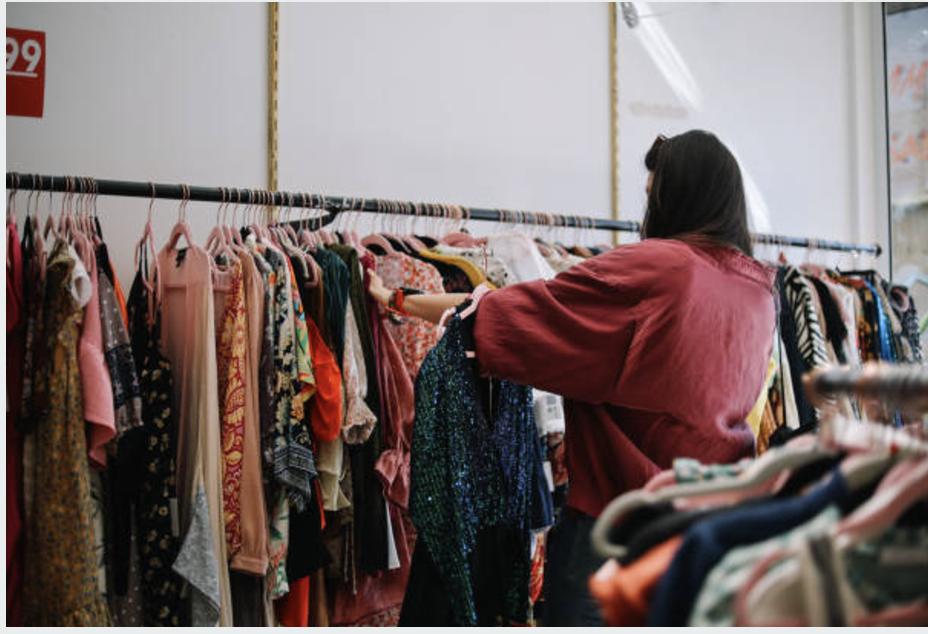Buying secondhand clothes can be a powerful step toward a more sustainable lifestyle. Here’s why opting for preloved clothing is often better for the planet, your wallet, and even your wardrobe:
1. Reduces Environmental Impact
- Minimizes Resource Use: Producing new clothing requires vast amounts of water, energy, and raw materials. For example, a single cotton shirt can take 2,700 liters of water to produce.
- Cuts Carbon Emissions: Secondhand shopping reduces demand for new production, which is responsible for significant greenhouse gas emissions.
- Saves Energy: Avoids the energy-intensive processes involved in manufacturing, dyeing, and transporting new garments.
2. Diverts Waste from Landfills
- Textile Waste Problem: Millions of tons of clothing are discarded every year, much of which ends up in landfills. Secondhand shopping gives these items a longer life.
- Slows Down Fast Fashion’s Cycle: By buying used, you reduce the volume of waste generated by fast fashion, which encourages overproduction and overconsumption.
3. Reduces Demand for Fast Fashion
- Challenges Overproduction: The fast fashion industry is notorious for unethical labor practices and environmental degradation. Choosing secondhand reduces demand for cheaply made, disposable clothing.
- Promotes Circular Economy: Secondhand shopping keeps clothing in use longer, supporting a “reuse” culture rather than the “buy-discard” mentality.
4. Saves Money
- Budget-Friendly: Secondhand clothes are typically more affordable than new ones, allowing you to save money while making sustainable choices.
- High-Quality Finds: You can often find better-quality, long-lasting pieces (sometimes even designer!) for a fraction of the price.
5. Encourages Unique Style
- One-of-a-Kind Finds: Thrift shops, vintage stores, and secondhand apps often offer unique pieces that aren’t mass-produced.
- Creative Expression: Building a wardrobe from secondhand items allows for more creativity and individuality compared to buying off-the-rack fast fashion.
6. Supports Local and Charitable Businesses
- Community Impact: Shopping at thrift stores often supports local businesses, charities, or non-profits, giving back to your community.
- Empowers Circular Commerce: Platforms like Poshmark, Depop, or local swap events create a marketplace where buyers and sellers promote sustainability.
7. Reduces Pollution from Synthetic Fibers
- Limits Microplastics: New synthetic clothing sheds microplastics into waterways during washing. Opting for secondhand reduces the demand for such items.
- Detoxifies the Wardrobe: Vintage and secondhand often feature natural fabrics, avoiding the reliance on plastic-based materials like polyester.
8. Supports Ethical Practices
- Rejects Exploitation: Many fast fashion brands rely on low-cost labor under exploitative conditions. Choosing secondhand minimizes participation in these systems.
- Promotes Slow Fashion: By reusing garments, you align with the ethos of slow fashion, which prioritizes quality, ethics, and longevity.
9. Encourages Conscious Consumption
- Mindful Shopping Habits: Secondhand shopping makes you more intentional about your purchases, curbing impulse buying and fostering a deeper appreciation for what you own.
- Educational Journey: Understanding the impact of your choices helps you connect with the global sustainability movement.
10. It’s Accessible and Fun!
- Widely Available: Secondhand options are accessible through thrift stores, online platforms, and even clothing swaps.
- The Thrill of the Hunt: Finding hidden gems and scoring deals is exciting and rewarding, making the shopping experience more engaging.
By buying secondhand clothing, you’re not just saving money—you’re actively reducing waste, conserving resources, and making a statement against the harmful practices of the fast fashion industry. Every piece of preloved clothing you choose is a step toward a greener, more sustainable world.

